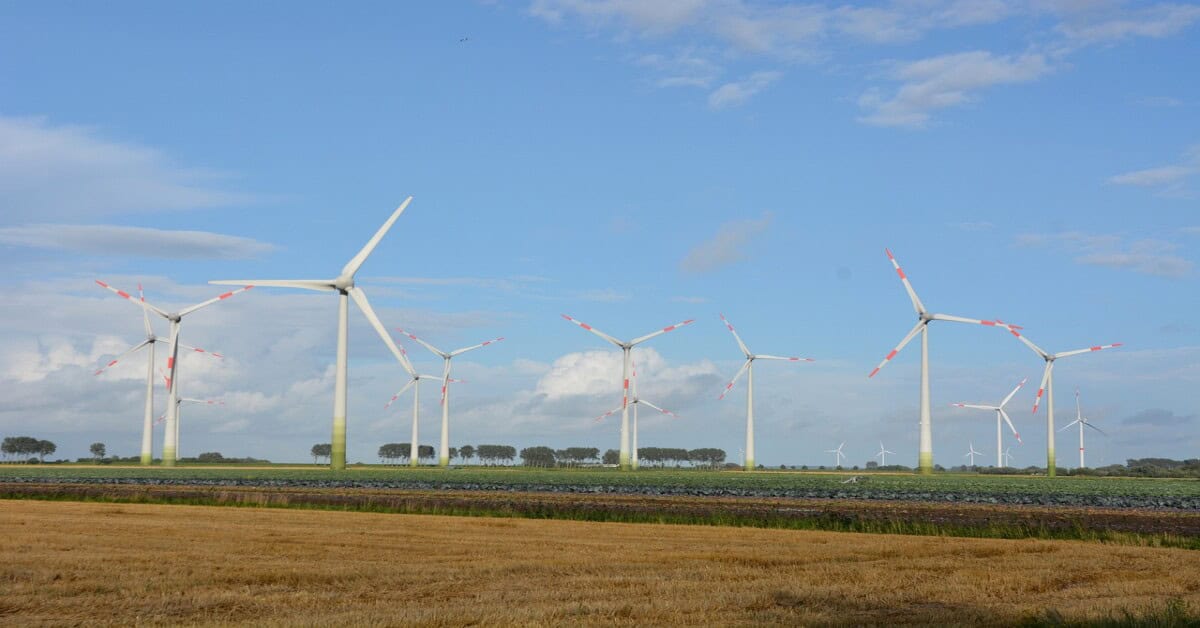The environment is everything around us, including air, water, and land. Sustainability means using resources in a way that ensures they are available for future generations.
Understanding the relationship between the environment and sustainability is crucial in today’s world. Without it, natural resources may disappear, and the planet could face severe consequences.
The importance of environment and sustainability lies in protecting ecosystems, improving human health, and ensuring the earth’s long-term survival.
These concepts work together to prevent damage caused by pollution, deforestation, and climate change. For example, sustainable practices like using renewable energy can reduce harmful impacts.
This post explores why environmental sustainability matters, focusing on how it benefits society and the planet. We will also cover key challenges and how individuals can contribute to a healthier world.
Understanding the Environment
The environment includes all living and non-living things that surround us. It consists of the air we breathe, the water we drink, and the land we live on.
There are two main components of the environment: the natural environment and the built environment. The natural environment includes forests, rivers, mountains, and wildlife, while the built environment consists of cities, buildings, and roads created by humans. Understanding the importance of environment and sustainability is key to preserving these essential elements for future generations.
Human activities have greatly impacted the environment. For example, industrial pollution has led to air and water contamination, harming both humans and wildlife.
Deforestation to make space for agriculture or buildings has destroyed habitats, while overuse of natural resources, like fossil fuels, contributes to climate change. Furthermore, the growing population has increased the demand for food, water, and energy, which puts even more pressure on the environment.
Preserving the environment is important for several reasons. First, a healthy environment provides clean air and water, which are essential for life. Additionally, it supports biodiversity by maintaining ecosystems where animals and plants can thrive.
For instance, forests absorb carbon dioxide, which helps reduce the impact of global warming. Protecting natural spaces ensures that future generations can enjoy these benefits and maintain a balance between human development and nature.
Besides, we depend on the environment for our well-being. It provides food, materials, and other resources needed for survival. Therefore, protecting it is not only about conserving nature but also about ensuring our future.
If we continue to damage the environment, we risk facing even bigger problems like food shortages and extreme weather events. Everyone can contribute to environmental preservation by making small changes in daily habits, such as recycling and conserving energy.
What is Environmental Sustainability?
Environmental sustainability refers to meeting our current needs without compromising the ability of future generations to meet theirs. It focuses on balancing human activities and the environment to ensure long-term health for both.
This means using resources wisely, reducing waste, and protecting the planet from harm. The importance of environment and sustainability becomes clear when we consider how unsustainable practices can lead to resource depletion, pollution, and other challenges that threaten life on earth.
There are three key dimensions of sustainability: environmental, social, and economic.
Environmental sustainability focuses on protecting natural resources and ecosystems. Social sustainability deals with improving quality of life and ensuring equal access to resources for all people. Economic sustainability is about creating systems that support long-term growth without overusing natural resources. Together, these three dimensions help create a balanced and healthy society.
Sustainable development is a key concept within sustainability. It means growing economies and improving quality of life without harming the environment. For example, sustainable farming methods can produce food without depleting soil nutrients.
Using renewable energy sources, like solar or wind, reduces dependency on fossil fuels. By adopting sustainable development, we can ensure that future generations will have access to the resources they need while keeping the planet healthy.

Sustainability and Environmental Issues
Environmental issues have become a major concern worldwide. Key problems include climate change, deforestation, pollution, and resource depletion. Climate change, driven by greenhouse gas emissions, causes global warming, which leads to rising sea levels, extreme weather, and habitat loss.
Deforestation, especially in rainforests, not only threatens biodiversity but also reduces the Earth’s ability to absorb carbon dioxide. Meanwhile, pollution from factories, vehicles, and waste impacts air, water, and soil quality, affecting both human and animal health.
Resource depletion, including the overuse of fossil fuels and freshwater, further contributes to environmental stress.
Sustainability offers solutions to these problems by promoting eco-friendly practices. For example, reducing carbon emissions through renewable energy sources, like solar and wind power, helps combat climate change.
Sustainable agriculture focuses on using land and water efficiently, reducing the need for deforestation and ensuring that food production can continue without depleting resources.
Besides, recycling and reducing waste are crucial steps in preventing pollution and preserving natural resources. These practices, if widely adopted, can reduce the negative impact of human activities on the environment.
Unsustainable practices have long-lasting consequences. For example, overfishing leads to the collapse of marine ecosystems, making it harder for fish populations to recover. Similarly, excessive use of pesticides in farming contaminates water supplies and harms biodiversity.
The widespread use of non-renewable resources, such as coal and oil, contributes to air pollution and accelerates climate change. Without sustainable practices, these problems will continue to grow, affecting future generations and the health of the planet.
By addressing environmental issues through sustainable actions, we can protect the Earth and ensure a livable world for everyone.
Relation Between Environment and Sustainability
Sustainability and environmental preservation are deeply connected. Sustainability means using resources in a way that protects the environment for future generations. For example, when we cut down trees, sustainability encourages replanting to keep forests healthy.
This balance is essential for preserving ecosystems and ensuring that the planet remains livable. Without sustainable practices, natural resources like water and clean air could disappear.
Sustainability also plays a key role in addressing environmental issues. It helps reduce pollution, slow down climate change, and protect biodiversity.
For instance, by using renewable energy sources such as solar and wind power, we can decrease our reliance on fossil fuels, which contribute to air pollution and global warming. Similarly, sustainable farming practices reduce soil erosion and limit the use of harmful chemicals.
There are many sustainable practices that benefit the environment. For example, water conservation efforts, like using low-flow faucets, help save freshwater resources. Recycling reduces waste and lowers the demand for raw materials, which helps prevent deforestation and habitat destruction.
Sustainable transportation options, such as biking or using electric vehicles, help reduce carbon emissions, contributing to a cleaner environment. These small but effective actions can make a big difference.

Also Read: Importance of Environmental Conservation
Why is Environmental Sustainability Important?
Environmental sustainability is essential for preserving ecosystems and biodiversity. Healthy ecosystems provide clean air, water, and food, which are crucial for life on Earth. For example, forests act as carbon sinks, absorbing harmful greenhouse gases, while wetlands filter pollutants from water.
Biodiversity ensures that different species can thrive and maintain the balance of nature. Without sustainability, ecosystems can collapse, threatening the survival of many species, including humans.
Sustainability also has direct benefits for human health and well-being. Clean air and water reduce the risk of diseases like asthma and cholera. Additionally, green spaces, such as parks and forests, offer mental and physical health benefits by providing a natural environment for relaxation and exercise.
When we protect the environment, we also protect our health and the quality of life for everyone.
The long-term advantages of environmental sustainability extend to future generations. By managing resources responsibly, we ensure that future generations have access to the essentials like food, clean water, and energy.
For instance, practicing sustainable agriculture ensures that the soil remains fertile for farming, preventing food shortages. Moreover, by reducing waste and using renewable energy, we can limit the impact of climate change, making the planet a safer place to live.
One of the most important roles of sustainability is reducing carbon footprints. Carbon emissions contribute to global warming, which leads to rising sea levels, extreme weather, and loss of habitats.
By adopting sustainable practices such as energy efficiency, renewable energy, and reducing waste, we can lower carbon emissions and combat climate change. This not only helps protect the environment but also creates a more sustainable future for all.
Pillars of Environmental Sustainability
Environmental sustainability is built on three main pillars: environmental, social, and economic. These pillars work together to ensure that human activities support a healthy environment, social equity, and long-term economic growth.
Each pillar plays a vital role in maintaining the balance between development and nature.
Environmental Pillar
The environmental pillar focuses on conserving natural resources and reducing pollution. This includes protecting forests, oceans, and wildlife from destruction.
Renewable energy sources, such as solar and wind power, are key to this pillar, as they help reduce our dependence on fossil fuels. Additionally, pollution reduction strategies, like cutting down on plastic waste and limiting greenhouse gas emissions, are crucial for maintaining a healthy planet.
Social Pillar
The social pillar emphasizes equity, social inclusion, and addressing inequality. It ensures that all people have equal access to resources, education, and opportunities.
This pillar also highlights the importance of fair labor practices and community engagement in sustainability efforts. By promoting social justice, we can build stronger, more inclusive communities where everyone benefits from sustainable development.
Economic Pillar
The economic pillar focuses on achieving growth without depleting natural resources. Sustainable economic growth means creating jobs, developing industries, and improving living standards without harming the environment.
This can be achieved through green technologies, efficient resource use, and investment in renewable energy. By balancing economic development with environmental conservation, we can ensure prosperity for both present and future generations.

How Does the Environment Affect Sustainability?
The environment plays a vital role in determining the success of sustainability efforts. Natural resources like water, air, and soil are the foundation for all human activities. However, when these resources are polluted or overused, it becomes harder to achieve sustainability.
For example, deforestation reduces the Earth’s ability to absorb carbon dioxide, contributing to climate change. Likewise, polluted water sources impact both ecosystems and human health, making it difficult to sustain agricultural production and clean drinking water supplies.
Biodiversity also affects sustainability. A rich variety of species helps maintain ecosystem balance, ensuring that natural processes like pollination, nutrient cycling, and food chains function properly.
When biodiversity is lost due to human activities, such as habitat destruction or pollution, these processes are disrupted, making ecosystems more vulnerable to collapse. Without healthy ecosystems, efforts to sustain life on Earth face significant obstacles.
Human activities, including industrialization and urbanization, often strain the environment. Over-reliance on fossil fuels and unsustainable farming practices contribute to environmental degradation. For sustainability to thrive, there must be a balance between using natural resources and preserving them for future generations.
Therefore, it is crucial to protect ecosystems, promote cleaner energy, and reduce pollution to ensure the long-term success of sustainability efforts.
Examples of Successful Environmental Sustainability Practices
Several countries, cities, and organizations have successfully implemented environmental sustainability practices. One example is Denmark, which has become a leader in renewable energy.
Denmark generates nearly 50% of its electricity from wind power, significantly reducing its carbon footprint. This shift toward renewable energy shows how transitioning away from fossil fuels can benefit both the environment and the economy.
In the realm of sustainable agriculture, Costa Rica has made great strides. The country promotes organic farming and protects its biodiversity by maintaining forested areas. These practices not only preserve the environment but also support local farmers and promote eco-tourism.
Additionally, Costa Rica has committed to becoming carbon-neutral, proving that sustainable agriculture can go hand-in-hand with environmental protection.
Cities like San Francisco have also embraced sustainability through innovative recycling programs. San Francisco has one of the highest recycling rates in the world, diverting over 80% of its waste away from landfills.
By focusing on reducing waste and encouraging recycling, the city demonstrates how urban areas can adopt sustainable practices on a large scale. These examples show that sustainability is possible and beneficial when governments, businesses, and communities commit to making a difference.
Future of Environment and Sustainability
The future of environment and sustainability will be shaped by several key trends. Experts predict that global sustainability efforts will focus more on renewable energy, especially solar and wind power. As fossil fuel reserves dwindle and climate concerns rise, there will be an increased push for cleaner energy solutions.
Furthermore, sustainable agriculture will play a bigger role in ensuring food security while protecting ecosystems. For example, vertical farming and precision agriculture could reduce resource consumption while feeding a growing population.
Innovation and technology will be critical in promoting sustainable solutions. Green technologies like electric vehicles, energy-efficient buildings, and waste-reducing systems are already transforming industries.
Additionally, advancements in artificial intelligence and data analytics can help monitor environmental changes and create smarter sustainability strategies. These tools allow for better resource management and more effective pollution control, making sustainability efforts more impactful.
Global collaboration and policy reforms will also be crucial for the future of environmental sustainability. Governments, businesses, and communities must work together to enforce international agreements and adopt policies that prioritize the environment.
For instance, the Paris Agreement highlights the need for global cooperation to combat climate change. By implementing stricter regulations, providing incentives for sustainable practices, and fostering innovation, nations can work toward a more sustainable future.

Challenges in Achieving Environmental Sustainability
Achieving environmental sustainability faces many challenges. One major obstacle is overpopulation. As the global population grows, the demand for resources like food, water, and energy increases. This leads to more deforestation, pollution, and depletion of natural resources.
Excessive resource consumption further adds pressure, as industries overuse resources to meet demand. For example, the overuse of fossil fuels not only contributes to climate change but also depletes non-renewable resources.
Besides environmental obstacles, there are political, economic, and social barriers to sustainability. Politically, some governments prioritize economic growth over environmental protection, making it harder to pass laws that limit resource use or reduce pollution.
Economically, industries may resist change because adopting sustainable practices can be expensive at first. Socially, people may lack awareness or access to sustainable alternatives. For instance, in developing countries, poor infrastructure may prevent communities from accessing clean energy.
Despite these challenges, there are solutions that can help overcome these barriers. International cooperation is key to addressing global environmental issues like climate change. Policies, such as carbon taxes and renewable energy incentives, encourage industries to adopt greener practices.
Furthermore, public awareness campaigns can help educate people on the benefits of sustainability. If individuals, businesses, and governments work together, these challenges can be managed, creating a path toward a more sustainable future.
How to Make Our Environment Sustainable?
Creating a sustainable environment requires collective effort from individuals, businesses, and governments. One of the most effective ways to promote sustainability is through renewable energy. Switching from fossil fuels to renewable sources like solar and wind power can reduce pollution and slow climate change.
For example, installing solar panels on homes or using public transportation reduces the carbon footprint, making daily activities more sustainable.
Another important step is conserving natural resources. Simple actions like using less water, reducing waste, and recycling materials can go a long way. For instance, choosing products with minimal packaging or composting food waste reduces landfill pressure and saves resources.
Sustainable agriculture also plays a key role. Practices such as crop rotation and organic farming help preserve soil health and reduce the use of harmful chemicals, promoting long-term agricultural productivity.
In addition to individual efforts, governments and businesses must implement policies and strategies that encourage sustainable practices. International cooperation on climate agreements, stricter environmental regulations, and incentives for eco-friendly technologies are crucial.
Furthermore, education and awareness campaigns can help people understand the importance of sustainability and how their daily actions impact the environment. By taking these steps, we can make our environment more sustainable and secure a healthier future for everyone.

How Individuals Can Contribute to Environmental Sustainability
Individuals play a key role in promoting environmental sustainability. One simple action is reducing waste. By recycling and composting, people can divert waste from landfills, reducing the amount of pollution generated.
Additionally, conserving water is crucial. For example, turning off taps when not in use or using water-efficient appliances can save thousands of gallons of water each year.
Another way individuals can contribute is by opting for renewable energy. Homeowners can install solar panels, or choose green energy providers where available.
These options help reduce reliance on fossil fuels and lower carbon footprints. Besides, people can also support sustainability through transportation choices, such as biking, walking, or using public transport instead of driving.
Community initiatives and grassroots movements are essential for creating larger change. By joining local environmental groups or participating in clean-up drives, individuals can raise awareness and inspire others to adopt sustainable habits.
Moreover, supporting policies that encourage environmental protection through voting and advocacy is an effective way to push for broader sustainability efforts. By taking these small but meaningful steps, individuals can make a big impact on the planet’s future.
Conclusion
In conclusion, the importance of environment and sustainability cannot be overstated. This post has explored the definition of sustainability, its relationship with the environment, and the critical role of sustainable practices in protecting the planet.
It is clear that preserving ecosystems, promoting renewable energy, and addressing global challenges are essential for future generations. The success of environmental sustainability depends on innovation, international cooperation, and individual efforts.
Therefore, it is vital that we adopt sustainable practices in our daily lives, whether through reducing waste, conserving water, or supporting green policies. Together, we can create a healthier, more sustainable world for all.






